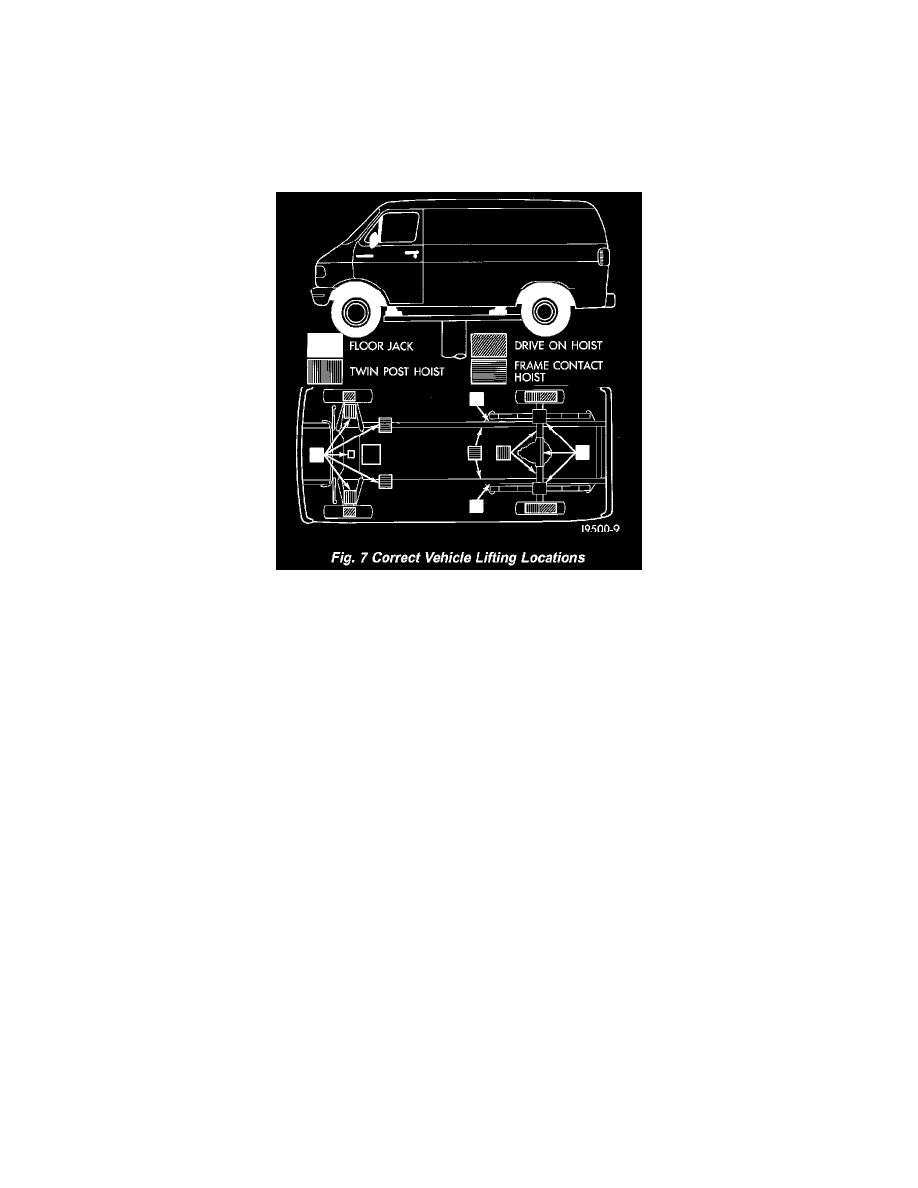Intrepid V6-2.7L VIN R (2003)

Vehicle Lifting: Technician Safety Information
STANDARD PROCEDURE - HOISTING RECOMMENDATIONS
Refer to the Owner's Manual for emergency vehicle lifting procedures.
WARNING: THE HOISTING AND JACK LIFTING POINTS PROVIDED ARE FOR A COMPLETE VEHICLE. WHEN A CHASSIS OR
DRIVETRAIN COMPONENT IS REMOVED FROM A VEHICLE, THE CENTER OF GRAVITY IS ALTERED MAKING SOME
HOISTING CONDITIONS UNSTABLE. PROPERLY SUPPORT OR SECURE VEHICLE TO HOISTING DEVICE WHEN THESE
CONDITIONS EXIST.
Fig. 7 Correct Vehicle Lifting Locations
Floor Jack
When properly positioned, a floor jack can be used to lift a Ram Van or Wagon (Fig. 7). Support the vehicle in the raised position with jack stands at
the front and rear ends of the frame rails.
CAUTION: Do not attempt to lift a CNG Ram Van/Wagon with a floor jack positioned under:
-
Body side sill
-
Steering linkage component
-
Drive shaft
-
Engine or transmission oil pan
-
Fuel cylinder
-
Front suspension arm
CAUTION: Do not attempt to lift a vehicle with a floor jack positioned under:
-
An axle tube.
-
A body side sill.
-
A steering linkage component.
-
A drive shaft.
-
The engine or transmission oil pan.
-
The fuel tank.
-
A front suspension arm.
Hoist
A vehicle can be lifted with:
-
A single-post, frame-contact hoist.
-
A twin-post, chassis hoist.
-
A ramp-type, drive-on hoist.
NOTE: When a frame-contact type hoist is used, verify that the lifting pads are positioned properly (Fig. 7).
WARNING: WHEN A SERVICE PROCEDURE REQUIRES THE REMOVAL OF THE REAR AXLE, FUEL CYLINDER OR SPARE
